Today's archidose #795
Here are some of my photos of Fulton Center (opened November 10, 2014) in New York City by Arup and Grimshaw Architects with the "Sky Reflector-Net" by James Carpenter Design Associates.
Corner of Fulton and Broadway with Corbin Building (corner of John and Broadway) on the right:
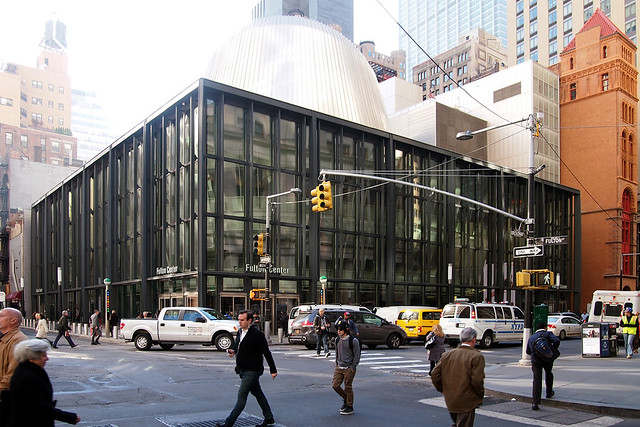
Looking west down Fulton toward the World Trade Center site:
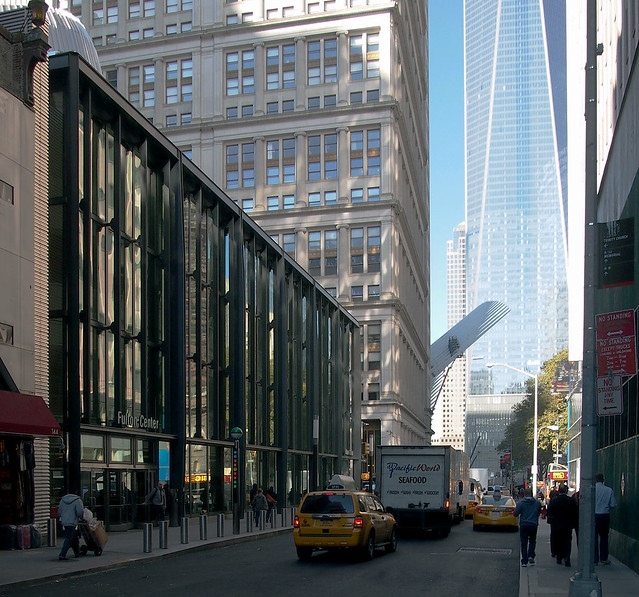
Entrance at Fulton and Broadway with atrium drum popping above the glass-box parapet:
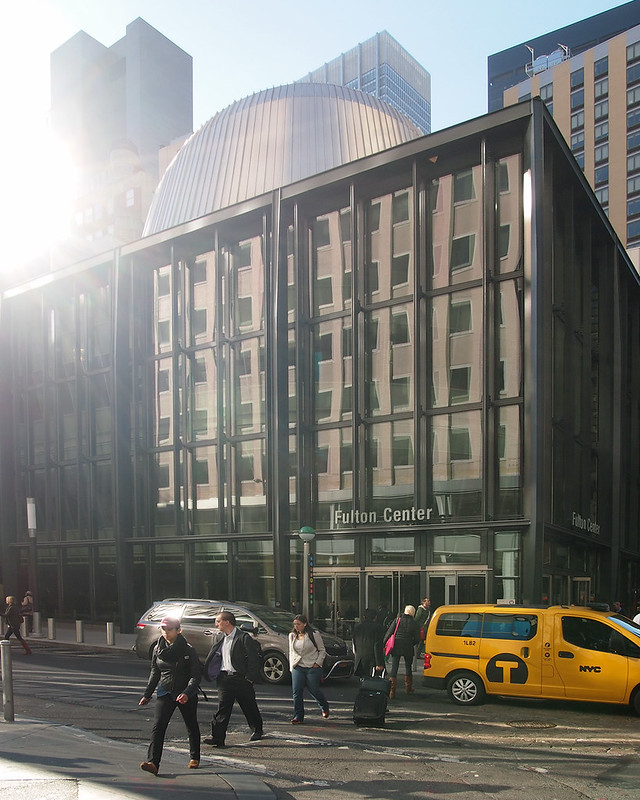
The gap between the glass box and the atrium:
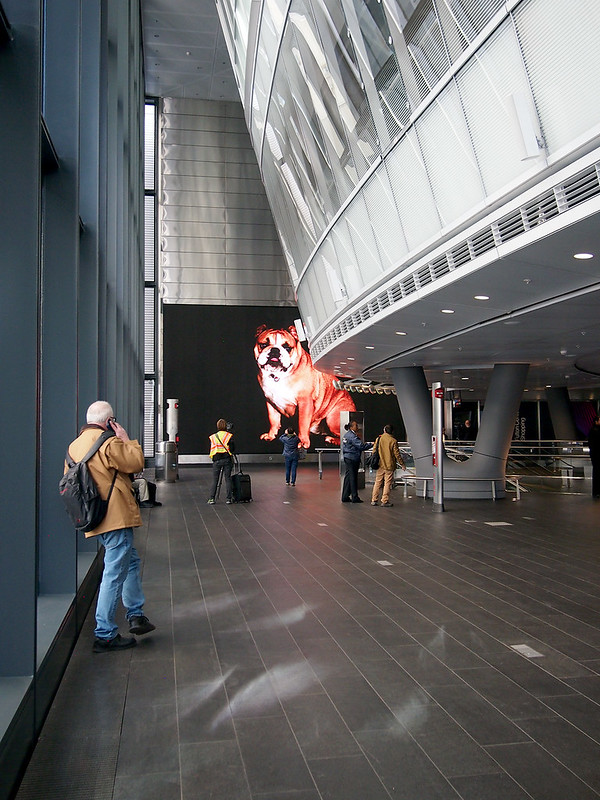
Looking toward the atrium from near the entrance along Broadway:
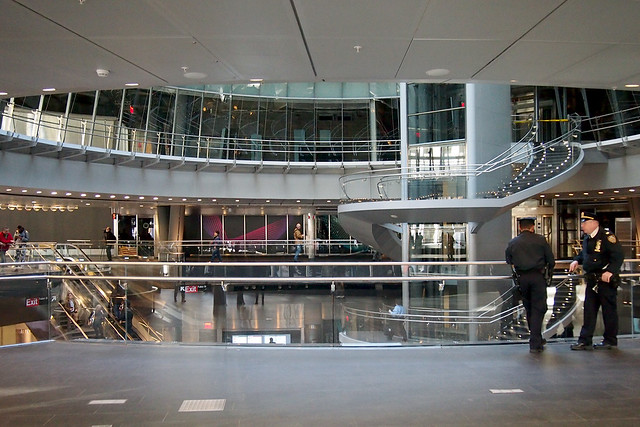
Getting closer to the atrium:
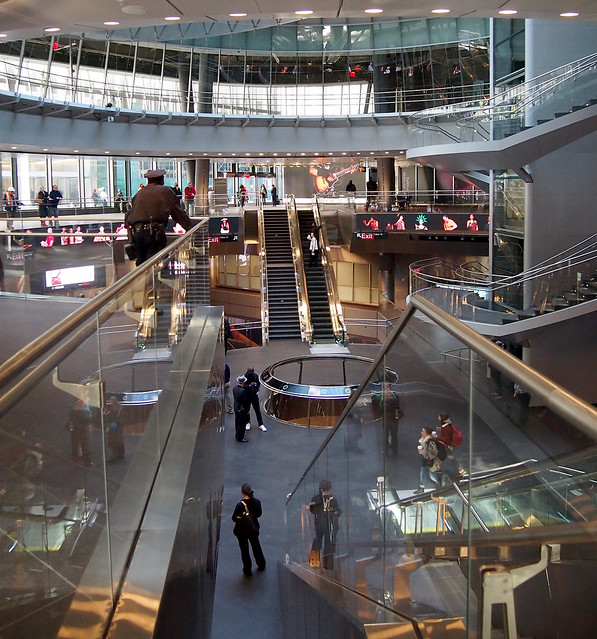
A view across the atrium to the Broadway/Fulton entrance with the lower edge of the Sky Reflector-Net visible:

Looking up at the atrium oculus from one level below the street (bottom of escalators in above photo):
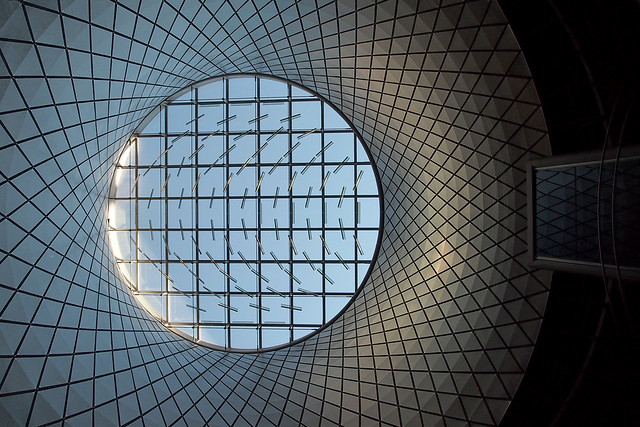
The same view from two levels below the street, looking through a circular opening in the floor above:
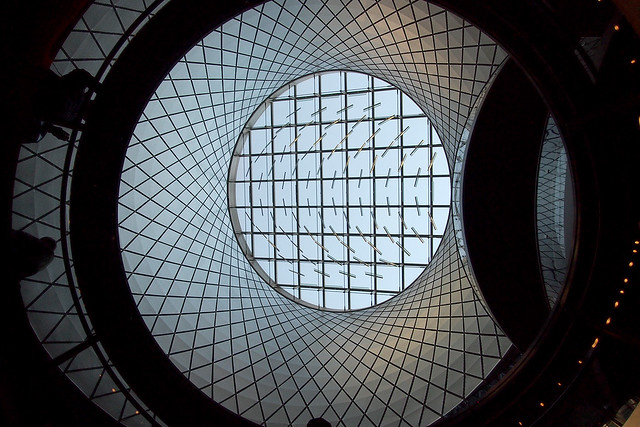
An escalator cuts through part of the old Corbin Building to give access to...

...the Dey Street Concourse that connects Fulton Center to the R Train:
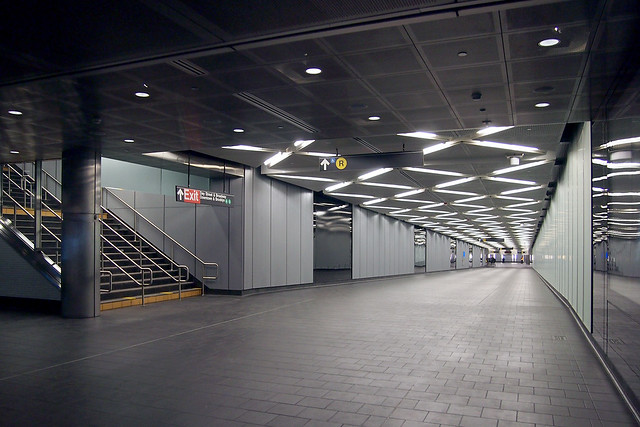
To contribute your Flickr images for consideration, just:
Corner of Fulton and Broadway with Corbin Building (corner of John and Broadway) on the right:

Looking west down Fulton toward the World Trade Center site:

Entrance at Fulton and Broadway with atrium drum popping above the glass-box parapet:

The gap between the glass box and the atrium:

Looking toward the atrium from near the entrance along Broadway:

Getting closer to the atrium:

A view across the atrium to the Broadway/Fulton entrance with the lower edge of the Sky Reflector-Net visible:

Looking up at the atrium oculus from one level below the street (bottom of escalators in above photo):

The same view from two levels below the street, looking through a circular opening in the floor above:

An escalator cuts through part of the old Corbin Building to give access to...

...the Dey Street Concourse that connects Fulton Center to the R Train:

To contribute your Flickr images for consideration, just:
:: Join and add photos to the archidose poolTo contribute your Instagram images for consideration, just:
:: Tag your photos #archidose
reminiscent of jahn's state of illinois center!
ReplyDeletewait...the $1.4 Billion Fulton transportation hub and the $4 Billion WTC tranportation hub are next to each other?
ReplyDeletePretty much. They're one block from each other, Fulton Center on Broadway and PATH on Church Street. This diagram shows their proximity.
DeleteOnly one block? how lazy are americans?
ReplyDeleteWell, I'm sure you know the answer to that question, but keep in mind that the PATH station serves people in New Jersey, while the Fulton Center serves people in the rest of Manhattan, Brooklyn, Queens and the Bronx. Having an underground connection between the two is helpful. Having the two in one station might have been ideal, but that's a major transportation infrastructure ordeal rather than an architectural issue.
Delete